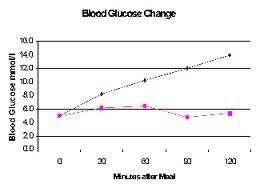What is a Safe Blood Sugar Level?
Understanding blood sugar level ranges is extremely important when it comes to diabetes self-management. After being diagnosed with diabetes, most people wonder what normal, high, or low blood sugar levels actually mean.
Due to the differences in our health history and the way our bodies function, it may also affect factors that influence blood sugar levels such as medication and food.
Blood sugar levels in people without diabetes are different from the target levels recommended for diabetes patients. Therefore, if you are diagnosed with diabetes, your doctor will work with you to determine personalized safe blood sugar levels that meet your specific health needs.
Therefore, recommended blood sugar levels may vary for every individual and it is important to discuss this with your physician or healthcare provider.
What are safe blood sugar levels?
Health organizations like the CDC (Center for Disease Control and Prevention) and ADA (American Diabetes Association) have provided the following guiding principles on safe glucose levels for people who have not been diagnosed with diabetes:
-
Fasting plasma glucose level
This measurement is taken at least 8 hours after your last meal (when you’re fasting) such as in the morning. According to ADA recommendation, fasting plasma glucose for people who don’t have diabetes should be below 100 mg/dL.
-
2 hour/ after meal plasma glucose level
This measurement is typically taken 2 hours after your last meal. According to ADA recommendation, after-meal plasma glucose should be below 140 mg/dL for healthy individuals.
-
A1C
This test is usually taken regardless of when you last ate. It measures the amount of blood sugar bonded with hemoglobin, which typically accumulates over a period of 3 months. CDC recommends that A1C levels should be below 5.7%.
Safe blood sugar levels for diabetes patients

Physicians usually tailor target blood glucose levels to an individual by considering factors such as lifestyle, age, other health conditions, mental state, years since diagnosis, risk of extremely low blood sugar levels, and availability of economic resources needed to reach target blood sugar goals.
Safe blood sugar levels for diabetes patients (non-pregnant)
| AACE | ADA | |
| Before meals | Below 110 mg/dL | 70 to 130 mg/dL |
| 2 hours after meals | Below 140mg/dL | Below 180 mg/dL |
| HbA1c (A1C) | Below 6.5% | Below 7.0% |
Safe blood sugar levels for pregnant women with diabetes
Target blood sugar levels during pregnancy are usually lower largely as a result of hormonal influences. The AACE and ADA guidelines for safe blood glucose levels for pregnant women with diabetes differ slightly. However, it is essential for pregnant women with diabetes to follow individual recommendations provided by their physicians.
According to the ADA, pregnant women should maintain blood glucose levels of between 95 and 140 mg/dL. However, some organizations recommend even tighter goals of less than 89 mg/dL before meals and below 120 mg/dL after meals.
To monitor their levels, diabetes specialists recommend that pregnant women with diabetes check their blood glucose levels:
- First thing after waking up (fasting)
- At bedtime
- Before meals
- 1 hour after meals
Factors that affect blood glucose levels
If you have been diagnosed with diabetes or prediabetes, your body may have difficulty producing insulin or you may have resistance to insulin. As a result, your body is unable to regulate blood glucose on its own. Therefore, it’s important to familiarize yourself with factors that may cause blood glucose levels to rise or fall below the recommended levels.
Factors that cause blood sugar to rise
According to ADA recommendations, if blood glucose level rises above 180 mg/dL 2 hours after your last meal, it is generally considered above the safe range. Some of the main factors that may cause your blood glucose level to rise above the normal range include:
- Consuming larger meals or more carbs than usual
- Reduced physical activity
- Menstrual periods
- Pain, stress, and illness (both long-term and short-term)
- Not taking oral diabetes medication or insulin based on activity levels or carbohydrates intake
- Side effects from a wide range of medications including antipsychotics or steroids
- Dehydration
Factors that cause blood sugar levels to drop
If your blood sugar level is less than 70 mg/dL, it is considered below normal levels. Some of the factors that can cause low blood sugar levels include:
- Reducing the number of carbs you normally eat
- Missing snacks or meals
- Not eating enough
- Alcohol consumption (especially on an empty stomach)
- Increased physical activity
- Taking too much oral diabetes medication or insulin based on activity levels or carbohydrates intake
- Side effects from some medications (other than antipsychotics or steroids)
Everyone responds differently to various factors, which is the main reason why it’s essential to have custom target blood sugar levels. To maintain safe blood sugar levels, work with your physician to discuss adjustments to your medications, physical activity, or diet, and be sure to alert them of other essential factors like recent stressful events or illnesses.




